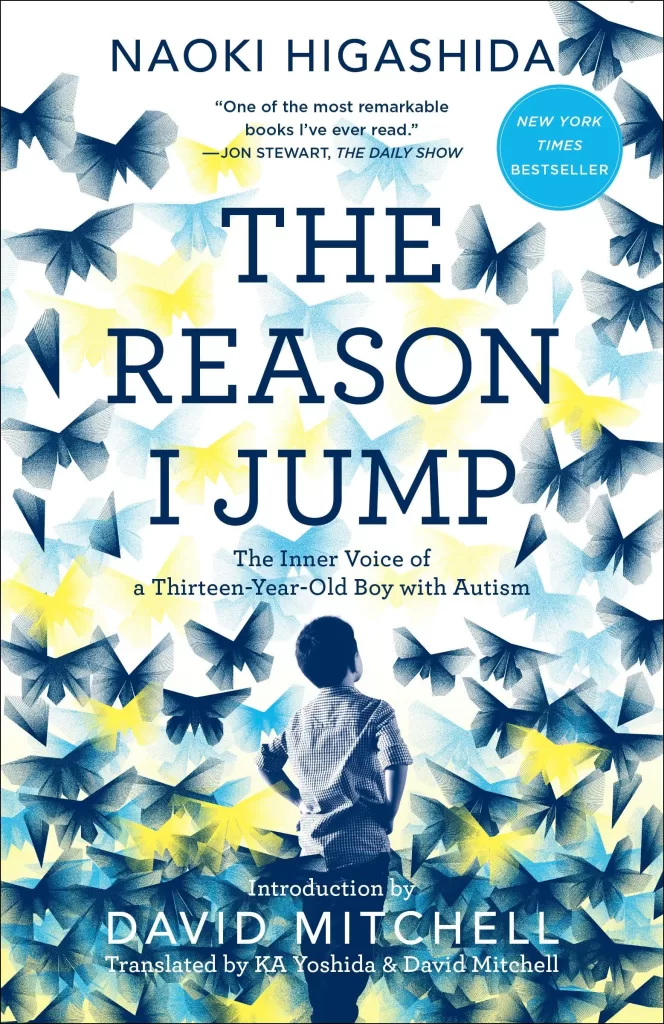As a Board Certified Behavior Analyst (BCBA) and practice owner, I regularly hear parents ask about resources they can use at home to complement their child’s Applied Behavior Analysis (ABA) therapy. While nothing replaces professional intervention, having the right tools and knowledge can significantly enhance your child’s progress and make your daily routines more manageable.
Today, I’m sharing three of my most recommended resources that have consistently helped families in our practice create more structured, supportive home environments for children with autism and developmental disabilities.
1. Book Recommendation: “The Reason I Jump” by Naoki Higashida

This groundbreaking book offers a unique perspective from a thirteen-year-old boy with autism, providing invaluable insights into the autistic experience. Written in a Q&A format, Higashida addresses common questions parents have about autism behaviors, from repetitive actions to communication challenges.
What makes this book particularly valuable for ABA families is how it bridges the gap between clinical understanding and lived experience. Many parents report that reading “The Reason I Jump” helped them develop greater empathy and patience during challenging moments, while also reinforcing many ABA principles about understanding the function of behaviors.
The book is especially helpful for parents who are new to autism diagnosis or those struggling to understand their child’s perspective. It complements ABA therapy by providing context for why certain interventions work and how your child might be experiencing the world differently.
2. App Recommendation: Proloquo2Go AAC Communication App

For families working on communication goals, Proloquo2Go stands out as one of the most comprehensive Augmentative and Alternative Communication (AAC) apps available. This research-backed tool provides symbol-based communication support that aligns perfectly with many ABA communication programs.
What sets Proloquo2Go apart is its evidence-based approach and extensive customization options. The app allows you to:
- Create personalized vocabulary relevant to your child’s daily routines
- Track communication progress over time
- Customize voice options and display preferences
- Access pre-programmed phrases for common situations
Many of our families use this app to practice communication skills learned during ABA sessions at home. The consistent visual format helps reinforce learning across environments, which is crucial for skill generalization. You can learn more about AAC research and implementation strategies at the International Society for Augmentative and Alternative Communication (ISAAC), which provides extensive resources for families exploring communication technologies.
3. Tool Recommendation: Visual Schedule Systems and Data Collection Apps
Visual schedules are fundamental tools in ABA therapy, and several digital solutions make creating and managing them easier than ever. Apps like “Choiceworks” or “First Then Visual Schedule” allow you to create customized visual supports that match your child’s specific needs and daily routines.
These tools are particularly effective because they:
- Reduce anxiety by providing predictability
- Support independence in daily living skills
- Allow for easy modifications as your child progresses
- Integrate seamlessly with ABA teaching strategies
Additionally, simple data collection apps can help you track behaviors and skills at home, providing valuable information to share with your child’s ABA team. This data helps ensure consistency between therapy sessions and home practice.
Maximizing the Impact of These Resources
While these tools are powerful, their effectiveness depends on proper implementation. Here are key strategies I recommend to families:
Collaborate with Your ABA Team: Before introducing any new tool or resource, discuss it with your child’s BCBA. They can help you determine how to integrate these resources with your child’s current programming and ensure consistency across settings.
Start Small: Don’t overwhelm yourself or your child by implementing everything at once. Choose one resource that addresses your most pressing need and master it before adding others.
Maintain Consistency: The power of ABA lies in consistent application. Whatever tools you choose, use them regularly and in the manner recommended by your behavior analyst.
Track Progress: Keep simple records of how these resources are working. Are you seeing increased communication attempts with the AAC app? Is the visual schedule reducing morning routine meltdowns? This information is valuable for both you and your ABA team.
The Science Behind These Recommendations
These resources aren’t just popular – they’re backed by research in Applied Behavior Analysis and autism intervention. The principles underlying each recommendation align with core ABA concepts:
- Environmental modifications that support learning and reduce challenging behaviors
- Visual supports that enhance comprehension and independence
- Systematic instruction that breaks down complex skills into manageable steps
- Data-driven decision making that ensures interventions are effective
For families wanting to dive deeper into the research behind autism interventions, the Autism Research Institute provides access to current studies and evidence-based practice guidelines that can help you make informed decisions about your child’s care.
Building Your Support Network
Remember that books, apps, and tools are just part of a comprehensive approach to supporting your child with autism. The most important factor in your child’s success is a strong team that includes family members, ABA professionals, educators, and other specialists working together toward common goals.
Consider connecting with other families through organizations like Autism Speaks, which offers local support groups, resource directories, and family-centered programming that can complement your child’s ABA services.
Moving Forward with Confidence
Supporting a child with autism or developmental disabilities can feel overwhelming, but having the right resources makes a significant difference. These three recommendations – “The Reason I Jump” for understanding, Proloquo2Go for communication, and visual scheduling tools for structure – address the most common areas where families seek additional support.
Remember that every child is unique, and what works for one family may need modification for another. The key is to remain flexible, collaborate closely with your ABA team, and celebrate the small victories along the way.
Your dedication to seeking out additional resources and tools demonstrates your commitment to your child’s success. With the right combination of professional ABA services and supportive home resources, you’re creating the optimal environment for your child’s growth and development.
If you’re looking for professional ABA services or want to discuss how these resources might fit into your child’s current programming, don’t hesitate to reach out to our team. We’re here to support both you and your child on this important journey.


